For tackling the unsightly daubs left on your paved surfaces, a straightforward solution involves employing a solution of baking soda and warm water. I recommend mixing a cup of baking soda with about a gallon of warm water. This mixture not only assists in lifting the stains but is also gentle on the surface, preventing any additional damage.
Use a stiff-bristled brush for scrubbing. This tool will allow for optimal exfoliation of the surface without excessive wear. Apply the baking soda mixture liberally onto the stained areas and let it sit for around 10-15 minutes, then scrub vigorously. Rinse thoroughly with clean water to wash away the residue.
If the stains are stubborn, consider a diluted vinegar solution as an alternative. A mixture of equal parts white vinegar and water can be quite effective. Apply it in a similar fashion, allowing it to break down the residues before scrubbing. Always ensure proper ventilation and wear protective gloves during the process to safeguard your skin.
For a long-term fix, sealing your paved surfaces after cleaning can prevent further staining and make future maintenance much easier. A high-quality sealant will provide a barrier against contaminants while preserving the aesthetic of your surfaces. Regular upkeep will keep your outdoor spaces looking their best.
Steps to Erase Residue on Concrete Surfaces
I recommend using a diluted solution of muriatic acid, commonly available at hardware stores, for stubborn residues. Mix one part acid to ten parts water, ensuring you wear protective gear. Apply this mixture sparingly using a brush, focusing on the discoloured areas, then rinse thoroughly with abundant water.
An alternative approach involves utilising a commercial concrete cleaner designed specifically for tough stains. These products often contain specially formulated ingredients that penetrate deeply, lifting the unwanted residues. Follow the manufacturer’s instructions for the best outcomes.
A pressure sprayer with hot water can be advantageous. The elevated temperature boosts cleaning effectiveness, aiding in the removal of any lingering traces. Ensure to angle the nozzle appropriately to avoid damage to the surface while effectively stripping contaminants.
<pFor minor imperfections, consider a concrete resurfacer. This option can fill in the blemished areas, providing a uniform appearance. Before applying, ensure the surface is clean and dry to promote adequate adhesion.
<pLastly, remember to regularly clean and maintain your surfaces with appropriate cleaners to prevent future problems. Keeping the surface sealed with a concrete sealant can also help resist staining and make future maintenance easier. This proactive measure reduces the likelihood of residue build-up over time.
Understanding Pressure Washer Marks on Concrete
Concrete surfaces can exhibit streaks or patterns due to the high-velocity flow of water and detergent used in cleaning. These patterns often result from uneven distribution of force and can vary significantly depending on the nozzle type, distance, and angle at which the stream is applied.
When cleaning, the nozzle’s width influences how concentrated the water pressure is, and narrow nozzles can cause deeper etching, leading to visible lines. Maintaining a consistent distance from the surface is crucial; too close may damage, while too far can result in insufficient cleaning.
Also notable is the difference in texture, which can amplify the appearance of these designs. A surface with a rough finish tends to show a higher contrast between cleaned and uncleaned areas than smoother types. Environmental factors, such as the weather conditions during cleaning, can also affect the results.
A crucial aspect of this issue is the quality of the concrete itself; older, more porous concrete may absorb dirt and grime differently compared to newly laid surfaces, making it more prone to uneven cleaning effects. Recognising the interplay of these elements helps in diagnosing the cause of the streaks and strategising on remedies.
Assessing the Severity of the Stains
Begin evaluation by examining the affected area under various lighting conditions. Bright sunlight can reveal subtle blemishes that may not be visible in the shade. Inspect the texture of the surface: shallow etching may require less intensive cleaning methods compared to deeper abrasions.
Classify the issues into three categories: light, moderate, and severe. Light alterations typically manifest as minor discolouration or streaks, easily fixable with basic cleaning agents or diluted solutions. Moderate distress may involve noticeable surface damage and can demand a more thorough approach, possibly including scrubbing with a stiff-bristle brush to lift impurities. Severe instances often necessitate professional intervention or the use of specialised equipment, particularly if the surface has become pitted or cracked.
Take note of the concrete’s age and pre-existing conditions, as these factors influence how well it may respond to cleaning techniques. Older slabs may have absorbed stains more deeply, complicating restoration efforts. Evaluate the type of contaminants present–oil, dirt, or mineral deposits–as they necessitate different removal strategies. Document your findings before proceeding with any restoration efforts to determine the most effective course of action.
Choosing the Right Cleaning Solution for Concrete
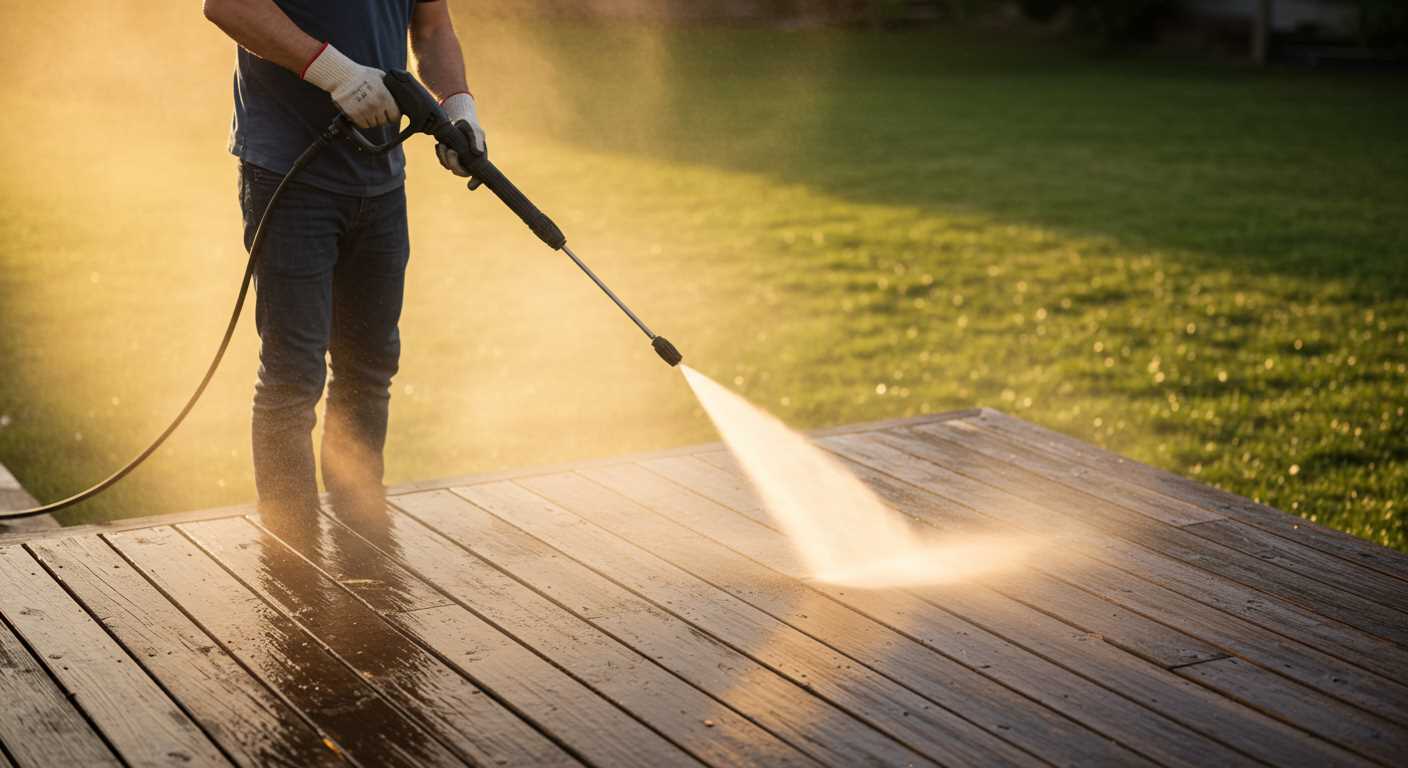
Select a cleaning solution specifically designed for outdoor surfaces to tackle stubborn stains on your pathways and driveways. Alkaline-based cleaners work effectively on oil and grease stains, while acidic solutions are ideal for mineral deposits and rust.
When considering products, look for biodegradable options that are friendly to the environment yet tough on grime. Many brands offer concentrated formulas that allow for custom dilution based on the severity of the stains.
Ensure compatibility with the surface finish. Test a small patch to make certain there’s no adverse reaction. For deeper blemishes, pre-soaking the area with the cleaner for at least 15 minutes can yield better results.
To maximise effectiveness, some solutions require agitation. A stiff-bristled brush or a rotary scrubber can aid in loosening tough dirt. Rinse thoroughly after applying to prevent residue buildup, which can discolour the surface.
Lastly, always adhere to manufacturer instructions regarding application methods and safety precautions to protect both your health and the integrity of the surface being treated.
Utilising a Concrete Cleaner for Stain Removal
Opt for a high-quality concrete cleaner specifically designed for tough stains. These products penetrate deep into the surface, addressing discolouration effectively. Ensure the chosen cleaner is compatible with the type of surface you are treating.
Application Process
Apply the cleaner generously across the stained area. Start with a small section to test the effectiveness. Use a stiff-bristled brush to agitate the product into the surface, enhancing its ability to lift stubborn stains. Allow the cleaner to sit for the recommended time on the packaging, typically between 5 to 15 minutes.
Rinsing and Finishing
Following the dwell time, rinse the area thoroughly with clean water to eliminate any residue. This step is critical to avoid discolouration from remnants of the cleaner. For optimal results, consider using a garden hose with a spray nozzle to ensure even distribution while rinsing.
| Cleaner Type | Best For |
|---|---|
| Acid-based | Rust, mineral deposits |
| Alkaline-based | Oil, grease |
| Eco-friendly | General stains, less harsh |
Assess if a second application is necessary, especially for stubborn or deeply ingrained stains. Regular maintenance with a mild cleaner can also prevent future staining.
Applying a Pressure Washer Correctly for Removal
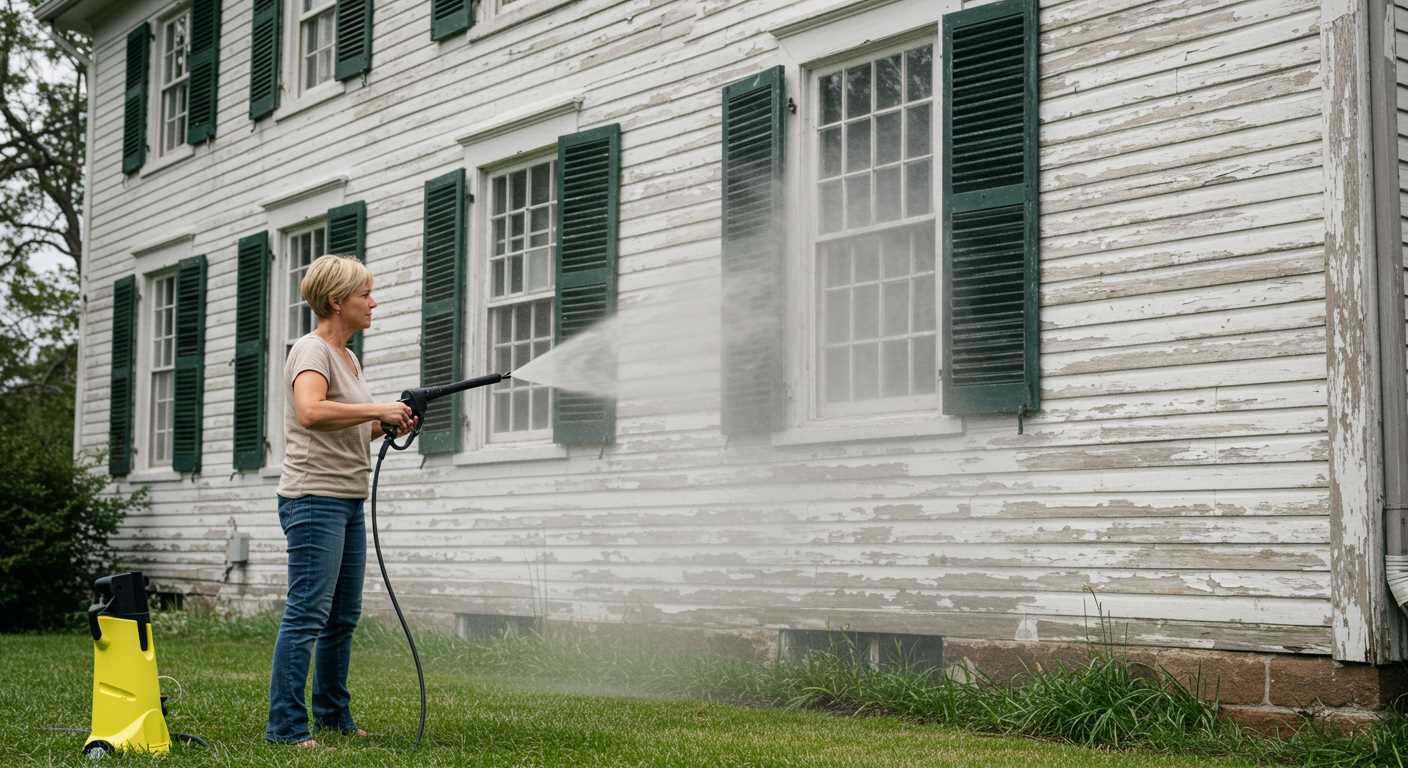
Adjust the nozzle for optimal results. A narrow spray pattern focuses energy on stubborn stains while a wider pattern covers larger areas without causing damage. I recommend using a 15-degree nozzle for tougher spots, but switch to a 25-degree or 40-degree nozzle for delicate surfaces.
Technique and Distance
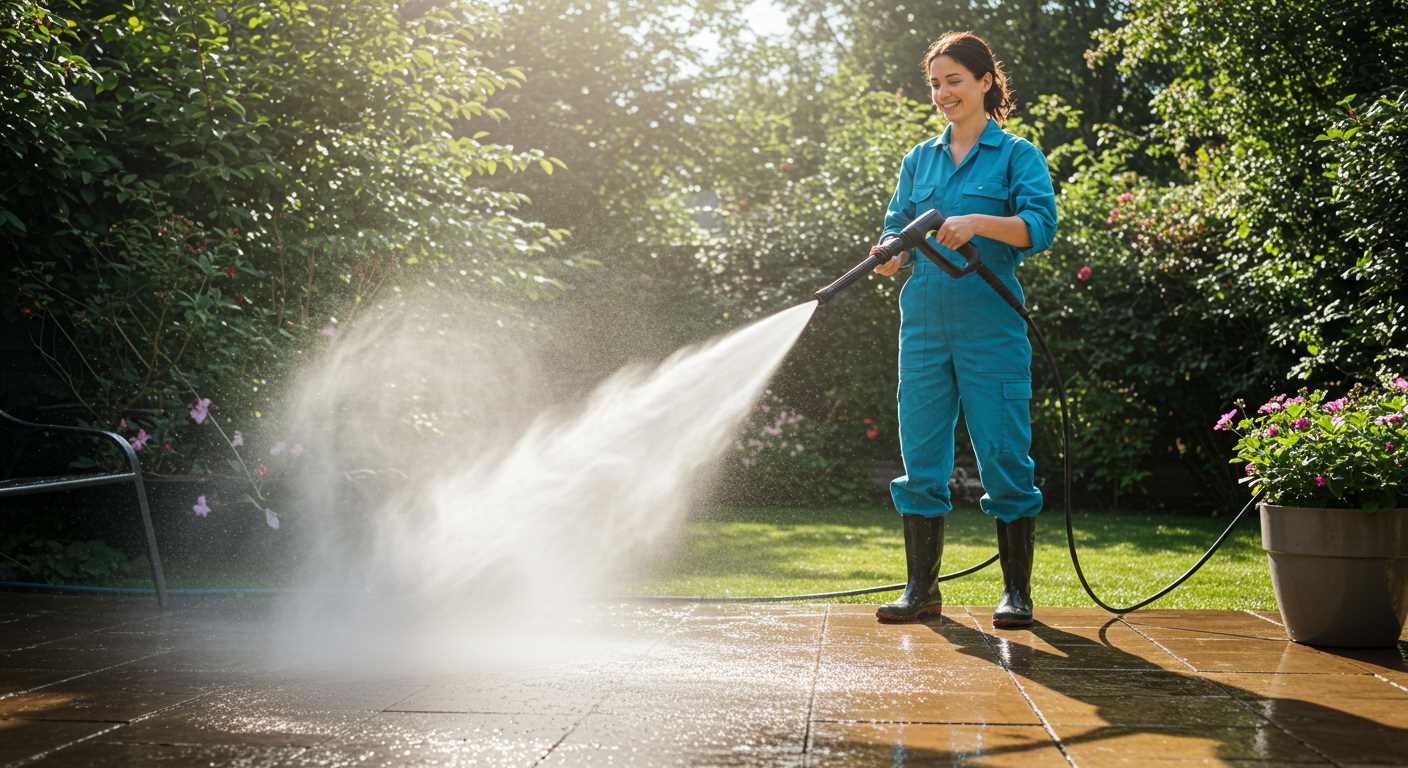
Maintain a consistent distance of approximately 12 to 18 inches between the nozzle and the surface. This helps prevent surface etching. Keep the nozzle moving in a sweeping motion to avoid concentrating pressure in one spot. Work in sections, overlapping each stroke slightly for even cleaning.
Water Temperature and Flow Rate
Utilise hot water if your equipment allows. Heated water can significantly enhance the breakdown of grime and stains. Ensure the flow rate is adequate for the task; typically, a rate of 1.5 to 2.5 gallons per minute is sufficient for concrete surfaces.
After completing the cleaning, rinse the area thoroughly. Any remaining detergent can attract dirt again if not properly washed away, so this last step is crucial for maintaining a clean appearance.
Finally, conduct a visual inspection. If stains persist, reassess your technique and possibly opt for a stronger cleaning solution. Each surface reacts differently, so adjustments may be necessary to achieve satisfactory results.
Alternative Methods for Persistent Marks
Consider applying a mixture of baking soda and water to tackle stubborn stains. Mix a quarter cup of baking soda with a litre of warm water to create a paste. Spread it over the affected area, allowing it to sit for approximately 30 minutes before scrubbing with a stiff-bristle brush. Rinse thoroughly afterwards.
An oxalic acid solution may also prove beneficial. This chemical compound effectively breaks down tough discolouration. Dilute it according to the manufacturer’s instructions, and apply it using a sprayer on the targeted spots. Ensure protective gear is worn during this process, and rinse the area thoroughly after treatment.
For those who prefer a more natural approach, try using vinegar mixed with water. Combine equal parts white vinegar and water, then spray or pour it onto the stained portions. Let it rest for 15 minutes, then scrub with a brush to lift the stains away. Follow up by rinsing the surface with clean water.
In some cases, a poultice made from powdered detergents and water can provide results. Mix until thick, apply it over the discoloured areas, and cover with plastic wrap. Allow it to set for a few hours or overnight before peeling away and rinsing the surface.
If stains remain persistent, consider utilising a commercial concrete cleaner specifically designed for tough stains. Select a product that targets the type of stains encountered, following the instructions provided on the label for the best outcomes.
Lastly, if all else fails, lightly sanding the surface can alter its appearance dramatically. Use a concrete grinder for this task, ensuring to follow safety protocols and working in a well-ventilated area. After sanding, clean the surface thoroughly to reveal a fresh, unmarred layer beneath.
Preventing Future Pressure Washer Stains on Concrete
Regular sealing of the surface offers significant protection against unsightly impressions. Choose a high-quality concrete sealer, ideally one that is breathable and suitable for the local climate. Reapply every two to three years, or as needed, based on wear and exposure to elements.
Routine Maintenance
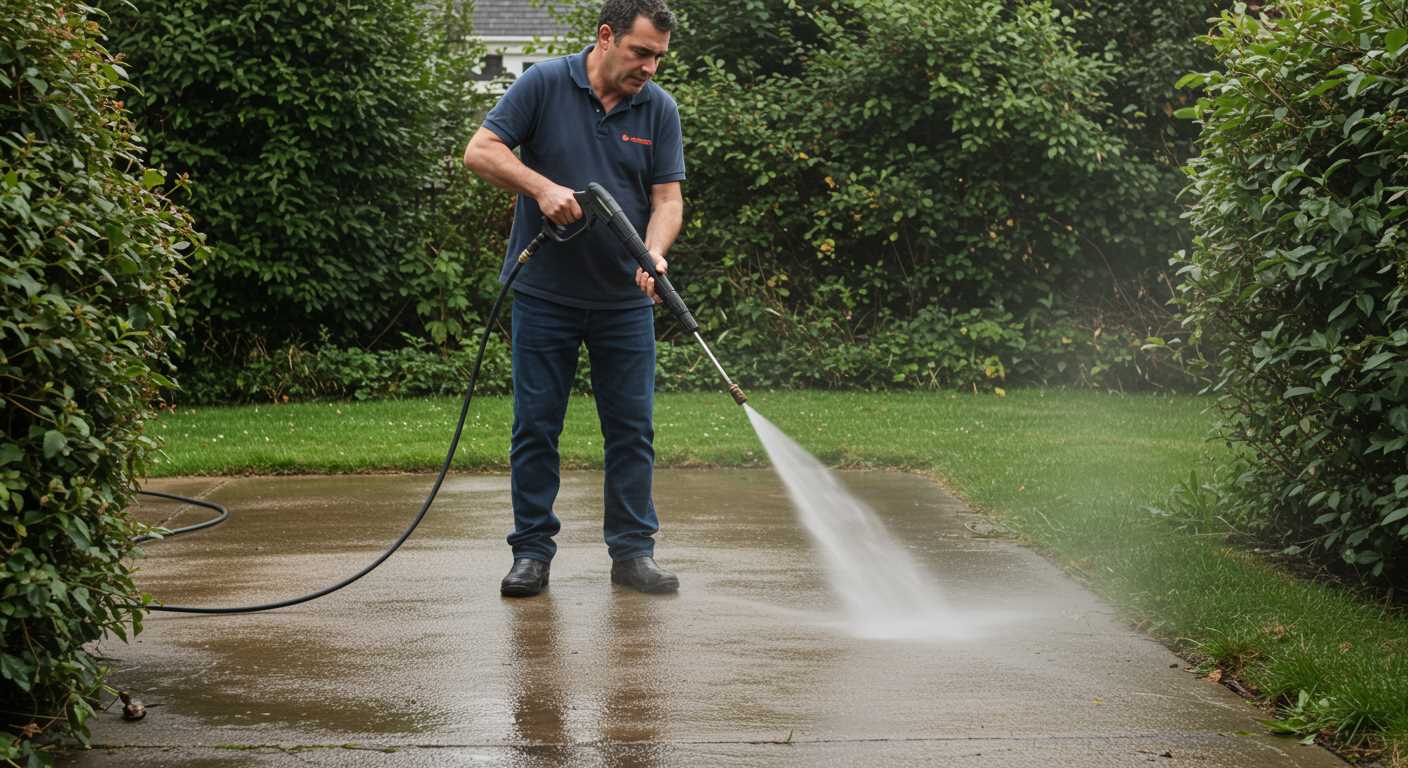
- Clean debris regularly to prevent build-up of grime or dirt.
- Utilise a broom or leaf blower to maintain clear surfaces.
- Perform spot cleaning with mild detergent and water when necessary.
Pressure Control
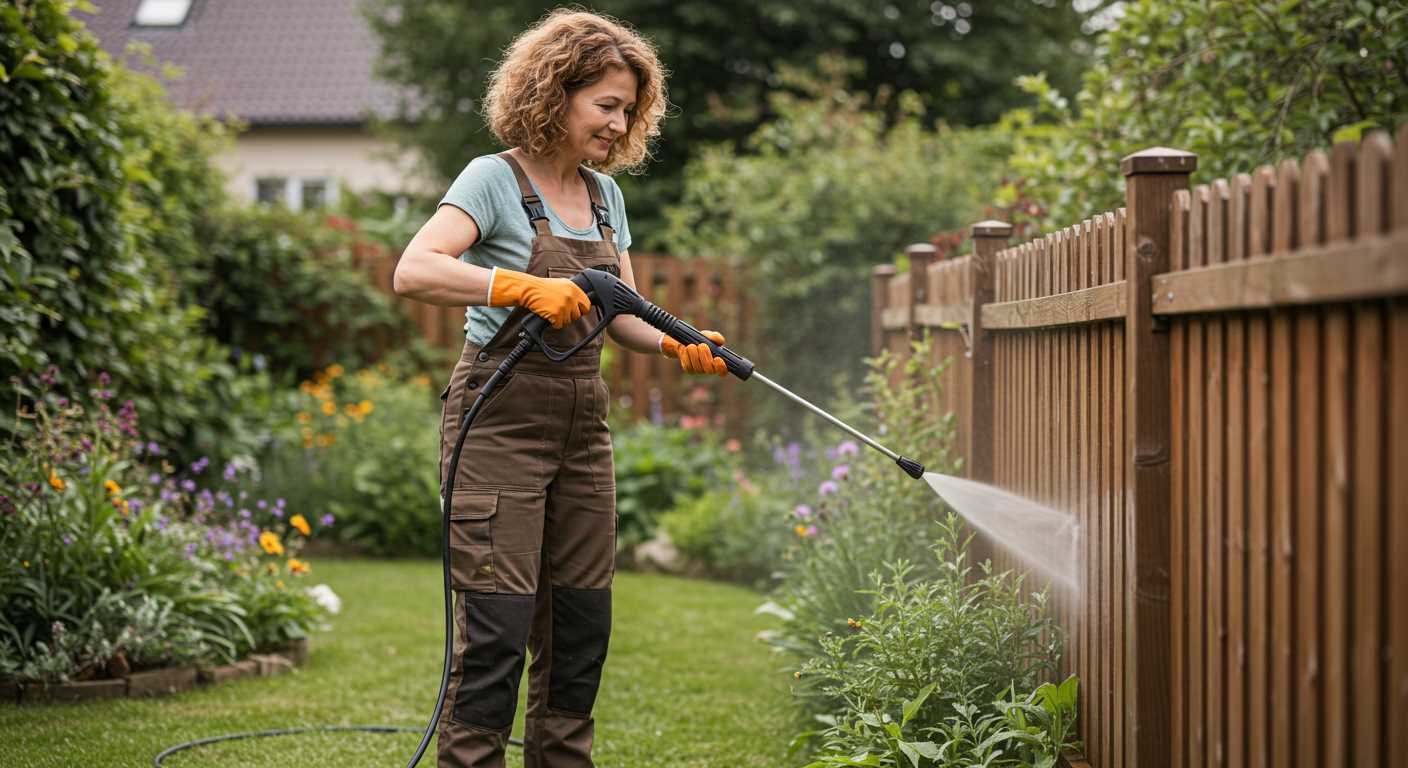
- Utilise the lowest effective water pressure for cleaning tasks, especially on delicate areas.
- Maintain a consistent distance from the surface to avoid excessive force in specific areas.
- Consider using adjustable nozzles to better control the dispersion of water.
Lastly, create a cleaning schedule tailored to your environment and use case. Monitoring the condition of your surfaces regularly can help identify potential issues before they escalate, ensuring lasting aesthetics and structural integrity.
FAQ:
What causes pressure washer marks on concrete surfaces?
Pressure washer marks on concrete can occur due to several reasons. When using a pressure washer, water is blasted onto the surface at high speed. If the nozzle is held too close or moved too slowly, it can erode the surface, leading to darkened or lighter streaks. Additionally, if the concrete has existing stains or dirt, the high-pressure water may remove some good materials alongside the grime, resulting in uneven patches. Different nozzle types also produce varying impacts, which can contribute to these marks.
How can I effectively remove pressure washer marks from my concrete driveway?
To remove pressure washer marks, you can start by using a concrete cleaner specifically formulated for your type of stains. Apply the cleaner according to the manufacturer’s instructions, let it sit for the recommended time, and then scrub with a stiff-bristled brush. Rinse off with water using a garden hose. If marks persist, a second application may be necessary. In more stubborn cases, a light sanding with a concrete grinder can help restore the surface. Always remember to follow safety precautions while using any chemical cleaners or tools.
Is it possible to prevent pressure washer marks from appearing in the first place?
Yes, you can take several steps to prevent pressure washer marks. Firstly, adjust the pressure setting on your washer to a lower level suitable for concrete. Maintain an appropriate distance between the nozzle and the surface—usually at least a foot away. Use a wide-angle nozzle for a more diffuse spray, which can help avoid concentrated force in one area. Furthermore, clean the concrete surface regularly to avoid the buildup of dirt and stains that may require intense cleaning, thus reducing the likelihood of creating marks.
Can I use household products to remove pressure washer marks from concrete?
Yes, some household products can be effective in removing pressure washer marks. A mixture of baking soda and water can create a gentle abrasive paste that helps lift stains. Alternatively, vinegar can be used for its acidic properties to break down residues. Apply the mixture to the marks, let it sit for a while, then scrub with a brush and rinse. It’s essential to test any product on a small, inconspicuous area first to ensure it does not damage the concrete surface.
How long does it take to remove pressure washer marks from concrete?
The time it takes to remove pressure washer marks can vary widely depending on the severity of the marks and the methods used. Basic cleaning with a concrete cleaner might require only a few hours, including application and scrubbing. If you opt for more intensive methods, such as sanding or multiple rounds of cleaning, the process can take a day or more to ensure proper treatment and drying time. Always follow the guidelines for any cleaning products used for the best results.








